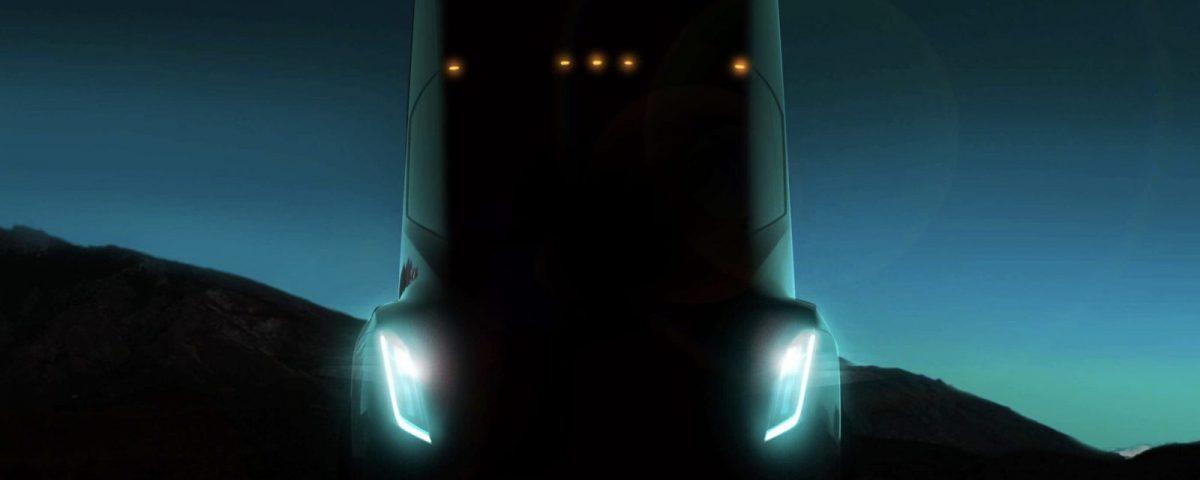
Improving your owner operator pay by providing value to your customer
October 10, 2017
5 Tips for New Owner-Operators
January 24, 2018In today’s trucking industry there’s a lot of talk about innovation. Telematics and fleet tracking systems, ELDs, and self-driving trucks. What does all this mean for owner operators? There are plenty of opinions on the matter, but what does the current research tell us? How will these technological advances benefit or hinder the world of owner operator trucking?
The questions are many, but here at Status Transportation, we’re all about the tangibles. We want questions paired with solid answers.

Photo: Tesla
How does the pace of technological progress relate to regulatory acceptance?
“Some of the technological building blocks […] have been in development for over a decade now. While regulations and legislation are nowhere near it. In fact right now as we speak today, we still have governments trying to fathom the implications this will have on societies, on equipment, on safety, on the environment. Right now trials are going on – prototyping is going on. Unless we see real-world test results we will not be able to comment on it. So right now the technology is ahead.”
– Sandeep Kar – Frost and Sullivan
Right now technology is ahead of regulations.
This is a good thing for the stability of the industry, but it’s vital to keep these technologies on your radar as an owner operator. Staying adaptable is important in any industry, but even more so for owner operator truckers. The reason I say this is because these new technologies are a driving force behind how the road is changing like never before.
As driver populations rise and roadway expansion reaches a tipping point, there will be new requirements for more productive drivers, vehicles, and highways (Clarke). Combine all that with a projected driver shortage and it’s easy to see why innovators are developing solutions decades in advance.
The Self-Driving Vehicle is upon us. How will this affect owner operators?
Many owner operators are of the opinion that the self-driving technology is not possible for truckers. This may very well be true with the current state of today’s roadways and arguably no one on the road would know better. The other side of the story, however, according to Jack Uldrich is that “some states, including Michigan, California, Nevada and Ohio are already building out vehicle-to-infrastructure networks.”
Also, there are close to 20 companies racing to get self-driving cars to market by 2020. So whether or not you’re operating a self-driving truck or not, the roadway will be populated more and more by vehicles that are self-driving.
Tesla already has vehicles on the road equipped with a function called autopilot, which is exactly what is sounds like – these cars are already capable of driving themselves. Tesla’s Autopilot also allows cars to pass vehicles automatically with a flick of the turn signal. Legally this system still requires drivers to pay attention. Not to mention they’re about to announce an electric semi truck reportedly within the next month.
Daimler is another company worth mentioning. They have manufactured and tested a self-driving semi truck that was officially authorized to operate on public highways in Nevada.
For almost anyone that drives a vehicle right now, this technology seems unimaginable. But make no mistake, this technology will revolutionize the way we use our roadways in the very near future.
References:
Troy Clarke. “Our ‘Boring’ Trucking Industry? We’re All About Innovation.” Trucks.com. June 01, 2016. Accessed November 08, 2017. https://www.trucks.com/2016/03/17/trucking-industry-all-about-innovation/.
Jack Uldrich. “Pace of Trucking Industry Change About To Hit Warp Speed.” Trucks.com. September 14, 2017. Accessed November 08, 2017. https://www.trucks.com/2017/09/07/trucking-industry-change-hitting-warp-speed/.
CCJDigital. YouTube. October 15, 2015. Accessed November 08, 2017. https://www.youtube.com/watch?time_continue=27&v=d0WGUkrbE0U.





